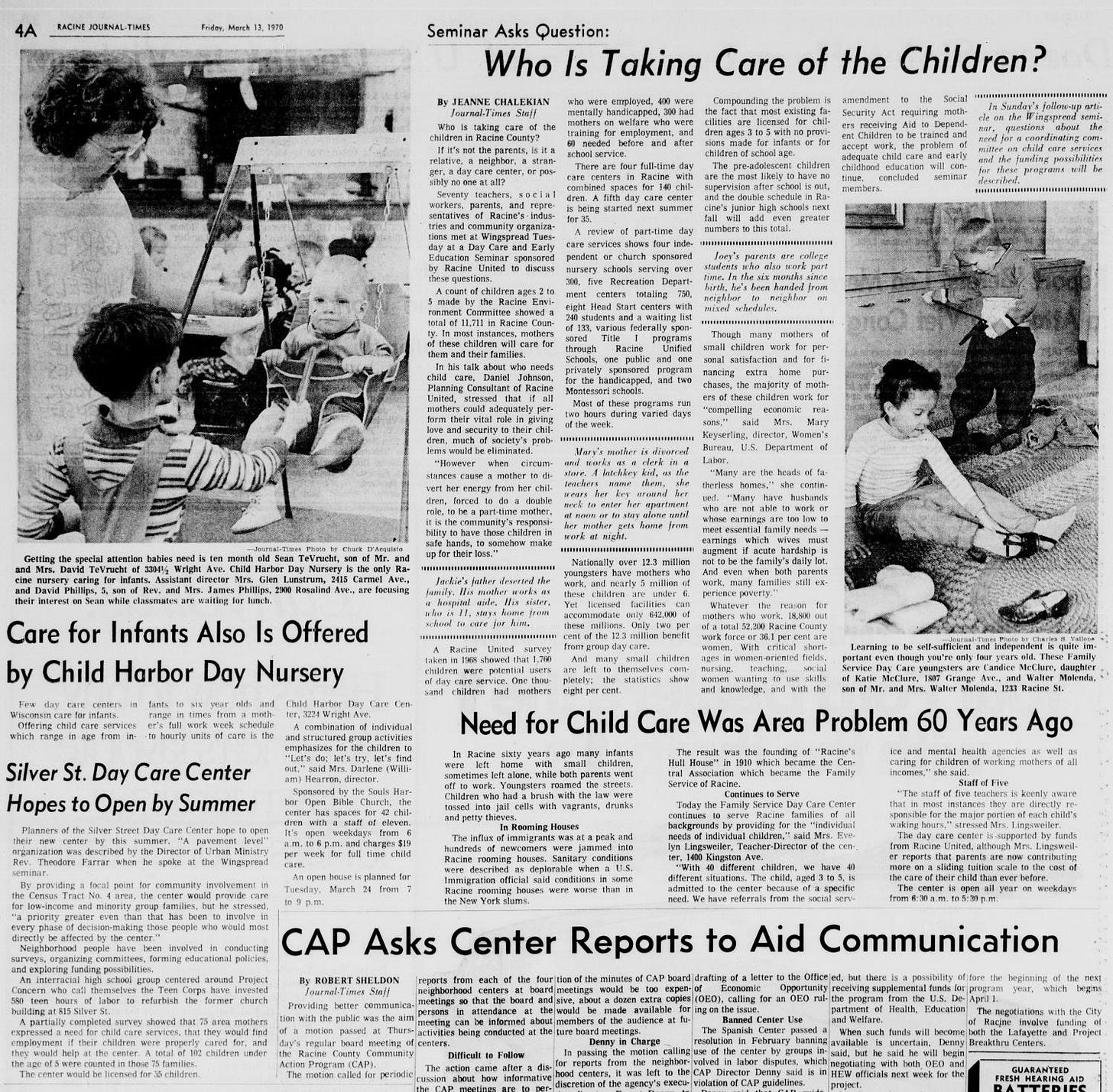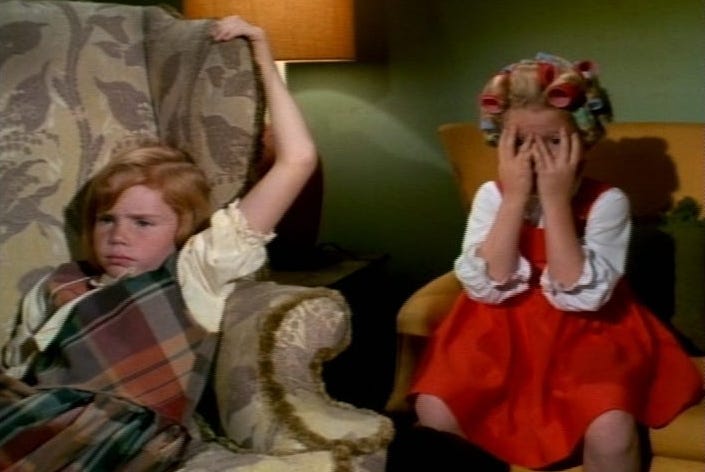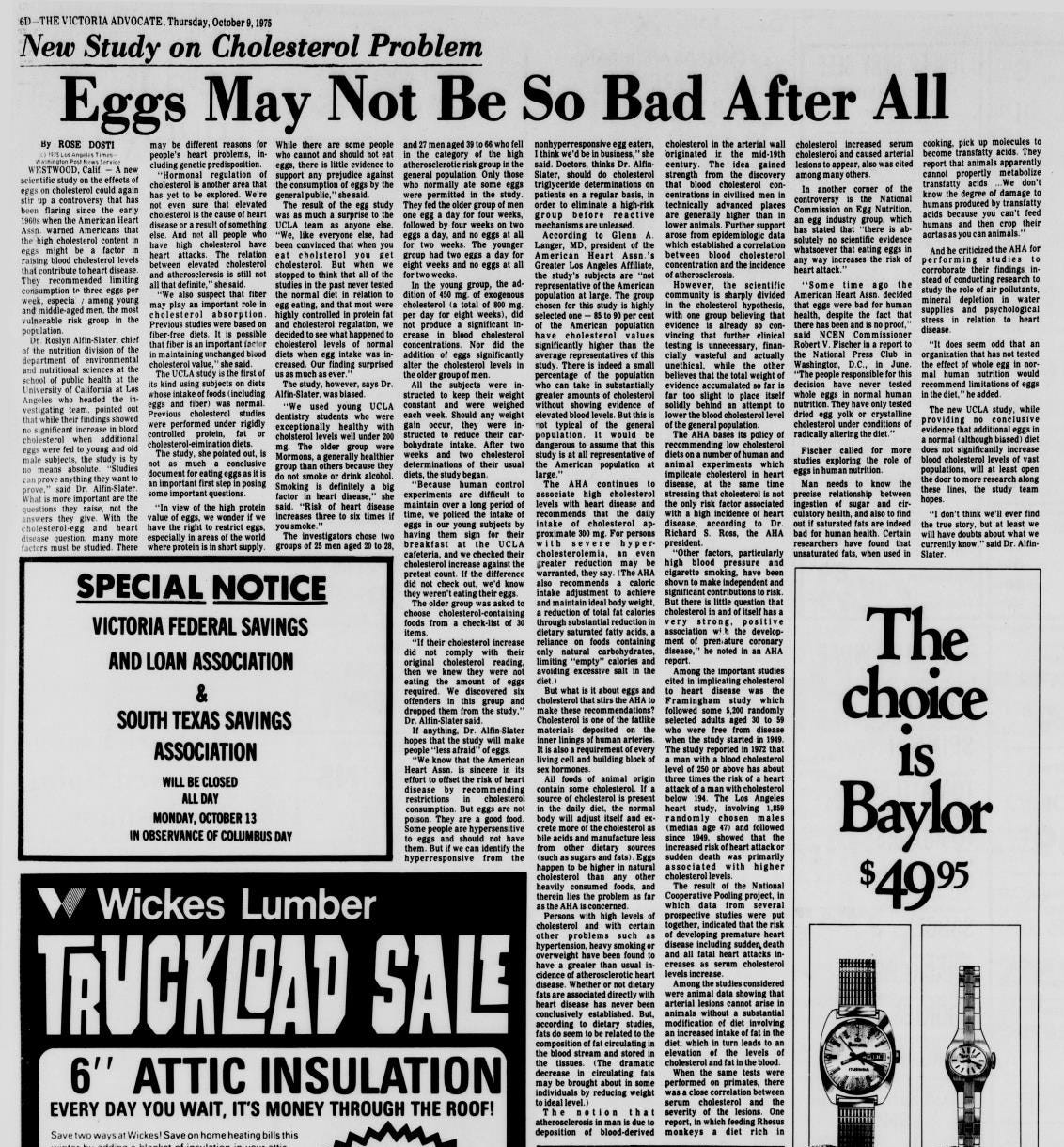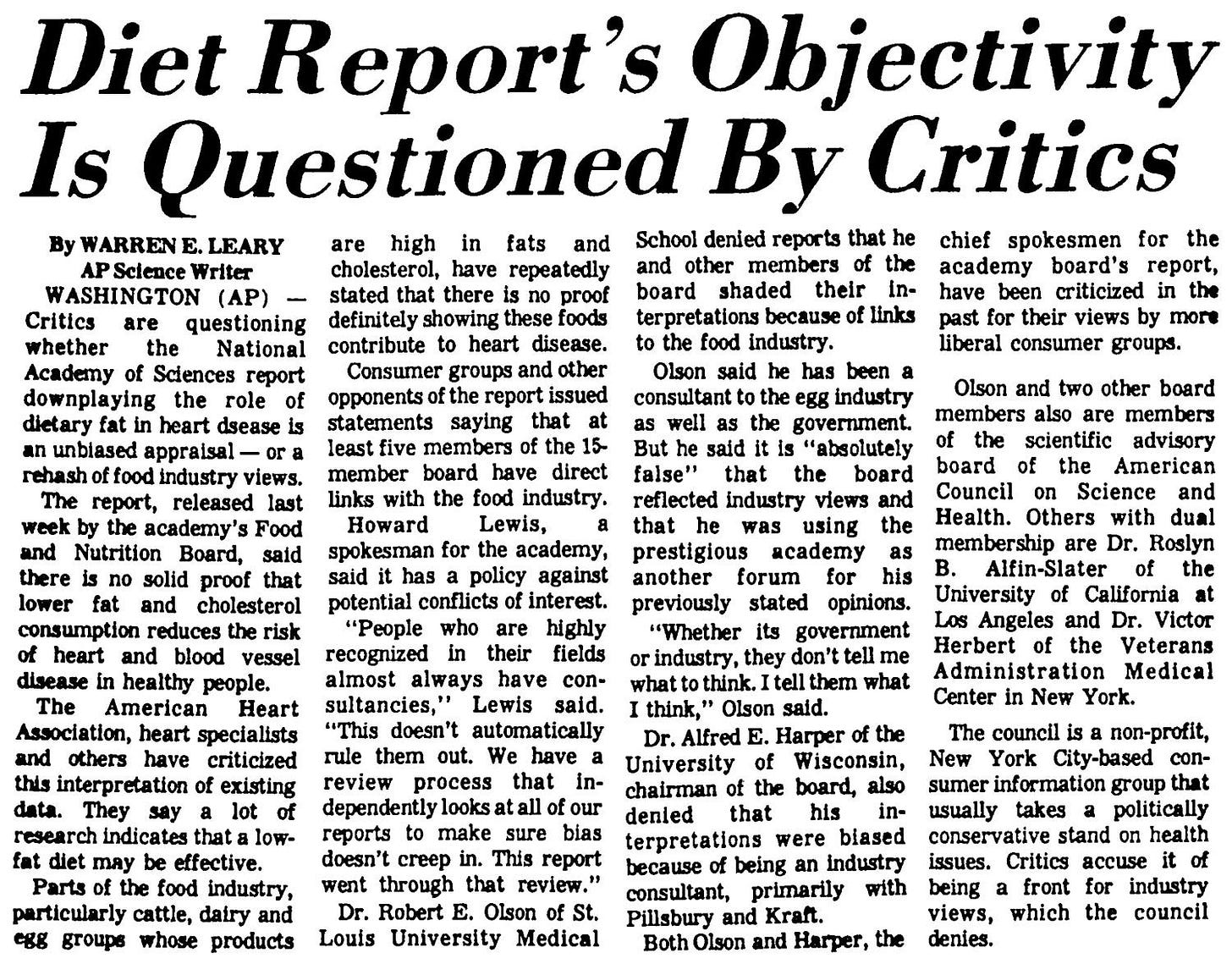The term “latchkey kid” dates back to at least World War II when many fathers enlisted into the armed forces and many mothers would go to work. It refers to the latchkey of a door to an apartment or house, usually hidden under a door mat or somewhere accessible outside, worn around a school age child’s neck, or carried somewhere on their person so they could enter their home after school.
This wasn’t a novel issue. According to a 1970 article in the Racine Journal-Times, the need for childcare was also prevalent in Racine, Wisconsin in the 1910s, citing infants being left at home with small children when both parents went to work, or juveniles left wandering the streets and being thrown in jail after trouble with the police.
The number of latchkey kids increased again in the 1970s as baby boomers were having their own children, divorce rates increased, more mothers went to work, and there were few childcare options available.
The issue creeped into the culture as well. For example, on September 23, 1968, CBS aired “The Latch Key Kid,” an episode of the sitcom Family Affair, where one of the daughters, Buffy, wants more independence at age seven after she befriends Lana, a latchkey kid whose mother is often gone, leaving her to care for herself. At one point, Buffy goes to Lana’s home where Lana curls Buffy’s hair, they make their own pizza dinner and watch a horror movie. (The episode’s story was written by Douglas Dick and his wife, Peggy Chantler Dick. Douglas, an actor and later writer, was born in my current town Charleston, WV, and appeared in Alfred Hitchcock’s Rope.)
At the beginning of the 1970s, ABC network executives realized that while they had plenty of programming for children and adults during their daytime and primetime schedules, there was a lack of content for teenagers and pre-teens.
Consequently, they recognized a golden opportunity to target that demographic—particularly latchkey kids, who were largely home alone watching television in the hours after school—by airing six or seven single-camera filmed hourlong specials per season during midweek in the late afternoon, usually Wednesdays at 4 p.m. These specials were topical and frequently controversial, centering on many issues of interest to that age group.
ABC Afterschool Special debuted on October 4, 1972, with an episode about a father and son who hunt an endangered species. Later in that inaugural season, an episode introduced Shakespeare to a young audience and was co-written by Oscar winner James Ivory (Howards End, Call Me by Your Name).
The episode following that one aired on February 7, 1973, and is titled “The Incredible, Indelible, Magical Physical, Mystery Trip.”
Written by Guy Fraumeni, who had been a graphic artist for productions like Rod Serling's Requiem for a Heavyweight, as well as his writing and directing for NBC Experiment in Television and NBC Children's Theatre, alongside Larry Spiegel, known for adapting The Bear Who Slept Through Christmas for NBC and contributing (uncredited) to the screenplay of John Huston's Phobia, the episode depicts two children who are miniaturized and embark on a journey through their uncle's body to learn about his health and fundamental human biology.
It’s a hybrid of live action and animation, not unlike the 2001 film Osmosis Jones about an anthropomorphized white blood cell who fights off bodily threats. The uncle is played by Hal Smith, who is best known for playing Otis Campbell (a.k.a. “Otis the Drunk”) on The Andy Griffith Show. One of the children was played by future Real Housewives of Beverly Hills star Kim Richards.
The tour guide for the kids’ adventure is an anthropomorphized body clock, or circadian rhythm, named Timer, who sings, dances, and does celebrity impressions in different parts of the body. He was voiced by Len Maxwell, who co-wrote and provided voices for Woody Allen’s 1966 film What’s Up, Tiger Lily?
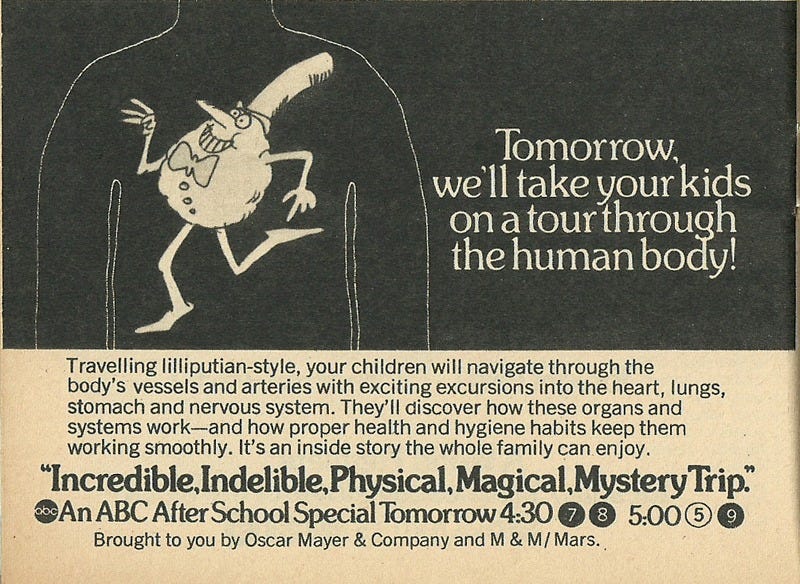
Timer returned for another special the following season called “The Magical Mystery Trip Through Little Red’s Head,” where two new children take a trip through their sister’s head to learn about the mind, emotions, and how they react to different situations, similar to Disney/Pixar’s 2015 film Inside Out. No live action scenes this time and it was the last animated episode of ABC Afterschool Special.
The following year, in 1975, ABC featured Timer in “Time for Timer,” a series of seven public service announcements broadcast on Saturday mornings and focusing on health. The spots were produced by DePatie-Freleng Enterprises, who also produced the other Timer specials and whose co-founder is Friz Freleng, who worked for decades animating and producing cartoons for Warner Brothers.
These PSAs were part of ABC’s commitment to including more educational content for children. Since 1968, commercial broadcasting networks moved to include more educational offerings during their blocks of children’s programming, spurred by pressure from parents, educators, and lobbying groups such as Action for Children's Television (ACT) (another impetus for creating the ABC Afterschool Special series).
ABC aired the same spots for seventeen years, through the entirety of the 1980s, ending in 1992.
One of the more famous of the seven spots is “I Hanker Fer a Hunk O Cheese” where Timer poses as a cowboy espousing the virtues of cheese as a snack. Spiegel and longtime television writer John Bradford (The Judy Garland Show, The Glen Campbell Goodtime Hour) are credited on Wikipedia as writers for the series.
The end of each spot features a consultant credit for Dr. Roslyn B. Alfin-Slater, UCLA School of Public Health.
Dr. Alfin-Slater’s credits are numerous. Among them, she is recognized as one of the first scientists to study how diet affects health, founded the Public Health Nutrition program at UCLA, co-founded the newsletter “Nutrition and the MD” for doctors and nutritionists, and wrote the Los Angeles Times’ column on “Science, Food, and Health” from 1972 to 1982.
Her Los Angeles Times obituary, however, points out a controversial moment in her career regarding the link between dietary fat and heart disease:
“Alfin-Slater was the target of criticism in 1980, when she was co-author of a report that downplayed the role of dietary fat in heart disease. Critics said that the results were biased by Alfin-Slater’s and other co-authors’ ties to the egg industry through consulting or research support.”
It has been long-established that cheese is high in saturated fat and contains some cholesterol.
It is believed saturated fats and high low-density lipoprotein (LDL) cholesterol can build up in your blood vessels.
String cheese is a common snack for latchkey kids.

String cheese was reportedly invented by cheese baron Frank Baker in 1976, the year after the “Time for Timer” PSAs began airing.





